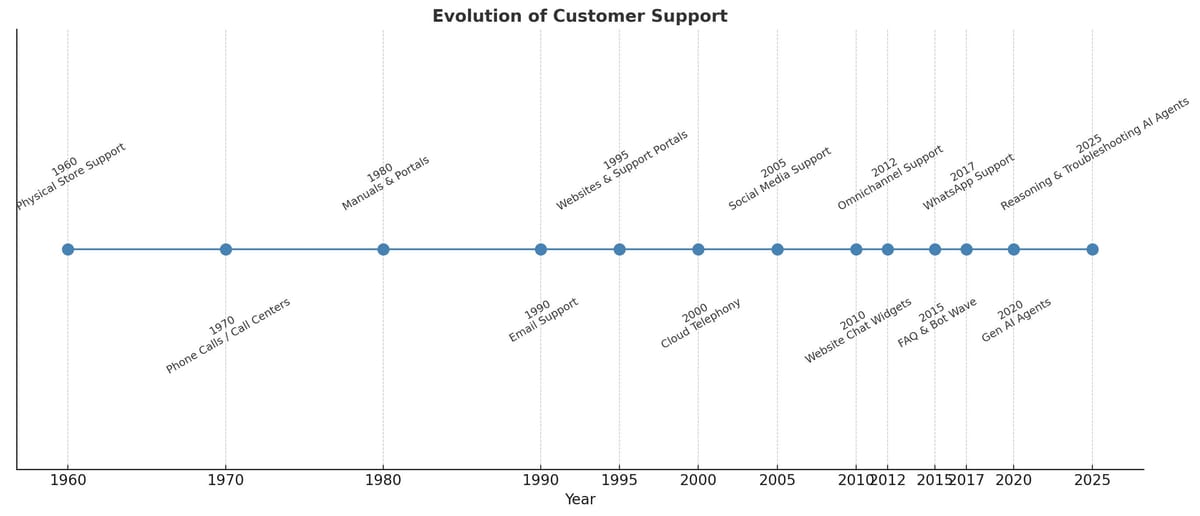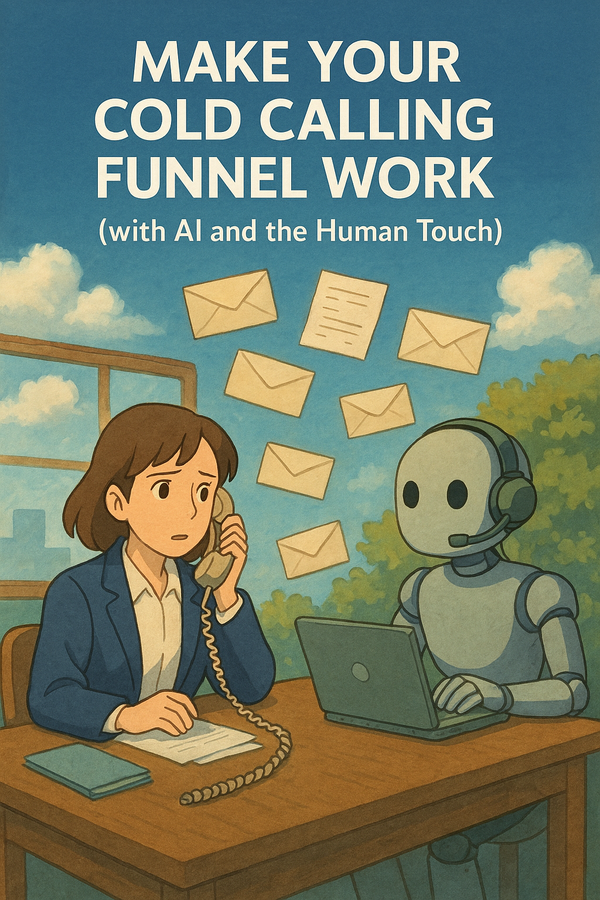The Evolution of Customer Support: From Storefronts to AI Agents

Customer support has always been about one thing: helping people when they’re stuck. But the way we’ve done it has constantly evolved, shaped by technology and customer expectations. Looking back at its journey helps us understand where we are headed and it’s a future that looks very different from the past.

From Physical Counters to Phone Calls
In the earliest days, customer support meant going back to the physical store. If your mixer broke or your product wasn’t working, you showed up at the shop and got help. This was slow, location-bound, and limited by store hours.
Then came phone calls. For the first time, help could travel over distance. A hotline or call center became the new “storefront,” but one you could reach from your home.
Manuals, Portals, and Email
Companies realized customers wanted answers without waiting in line—or on hold. The early “self-service” era began with product manuals and portals. If you bought a gadget, the thick booklet inside was your first support portal.
As the internet spread, email support became the next step. Customers typed long queries, and companies created ticketing systems to handle them. This was more scalable, but also slower, often leaving customers waiting for days.
Websites and Telephony
Brands soon launched websites with FAQs, downloadable manuals, and eventually, support portals. This was the first real attempt at centralizing information.
Parallelly, cloud telephony modernized the phone support model. Agents were no longer tied to a single office, they could be distributed, flexible, and better equipped.
Social Media and Web Widgets
With the rise of social media, customers started tweeting at airlines, tagging telcos on Facebook, or posting complaints publicly. Support became not just a private issue but a reputation game.
At the same time, websites began adding chat widgets. These mimicked the physical store clerk—someone who popped up and asked, “Can I help you with something?” The website became a digital storefront with a virtual presence.
Omnichannel and Bots
The next step was omnichannel support. Customers wanted to switch seamlessly between email, chat, phone, or social, and companies wanted agents who could handle it all.
Then came the first wave of bots. Initially, these were simple: answering FAQs or keyword-based queries. Later, workflow-driven bots with button-based, directed flows gained traction in B2C companies where most questions were repetitive and predictable.
WhatsApp and GenAI
Messaging apps like WhatsApp became serious support channels. Customers found it easier to text a brand than call one.
Then came generative AI. Unlike static FAQs, GenAI could answer dynamically with references from the company’s knowledge base, pull in content from multiple sources, and even trigger actions through integrations. Suddenly, AI wasn’t just responding, it was resolving.
The Future: Reasoning, Compute, and Troubleshooting
Today, we’re entering a new phase: AI agents that can reason.
- They don’t just answer questions, they troubleshoot problems.
- They can run workflows, check logs, recreate customer issues, and propose real fixes.
- They can combine reasoning with compute power, integrations, and autonomy.
Imagine this:
You’re chatting with UrbanClap because your massage appointment got delayed. Instead of just telling you “we’ll check,” the AI agent:
- Calls the service provider on your behalf
- Gets the updated time
- Informs you directly
- Coordinates rescheduling with you, all inside the same chat
Or in a SaaS company, a support agent (powered by AI) doesn’t just log your issue. It:
- Reads product configurations
- Parses logs
- Recreates your exact bug
- Suggests a fix, sometimes even before the engineer sees it
That’s where support is heading: from answering to resolving.
Closing Thought
Customer support started with people. It scaled with processes. It got faster with technology. And now, with AI agents, it’s becoming intelligent, proactive, and autonomous.
The next time you reach out for help, don’t be surprised if you’re not just chatting with an agent and you’re talking to an entire AI-powered support system that can reason, act, and resolve like never before.





